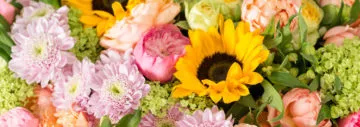| A ring with a pair of clasped hands is one of the oldest symbols of “plighted troth.”
In 1895, a single color — pink — was fashionable for spring weddings. In 1900, yellow was the color most often selected.
There should be at least three knots in the ribbons of a bridal bouquet, to represent husband, wife and child.
Yellow was the favorite color for a bride’s dress during the eighteenth century, and it was usually made of a heavy brocade.
In horse and carriage days, knotted favors of ribbon decorated the ears of the horses which drew the bridal carriage. |
|
The original function of the tissue paper, which is enclosed in a formal wedding invitation, was to blot the ink. Nowadays, it’s simply added for the “look,” or the “fun” of it.
Brides began wearing white for weddings as early as the sixteenth century; wearing white was a reflection of family wealth. Only the wealthy could afford a garment that would soil so easily, and be worn on only one day.
Many societies frowned on the use of yellow for a wedding gown, as they believed it was a sure sign of a wife’s intention to cheat on her husband.
An old German superstition held that pearls signified tears for the bride. |
|
In earlier years, brides placed their bouquets at grave sites in the cemetery, in remembrance of family members who had “passed on.”
During the time of the Roman Empire, couples were not officially married until they had eaten together. Perhaps this was the beginning of the wedding reception tradition.
Diamonds were not popular for engagement rings until the nineteenth century, when the exploitation of South American diamond deposits made it relatively inexpensive.
The ring on a posy holder is there to slip on a woman’s finger. |


